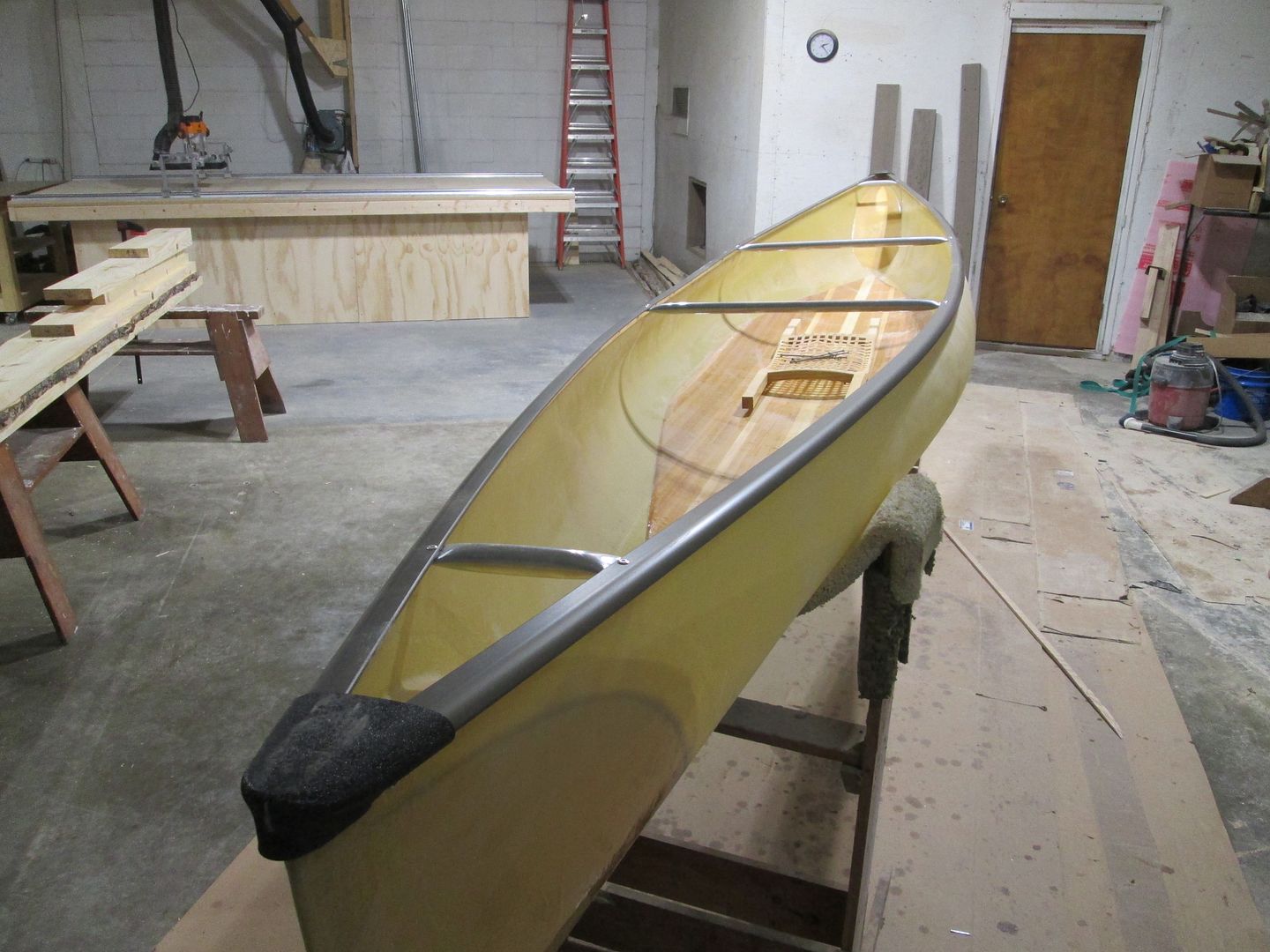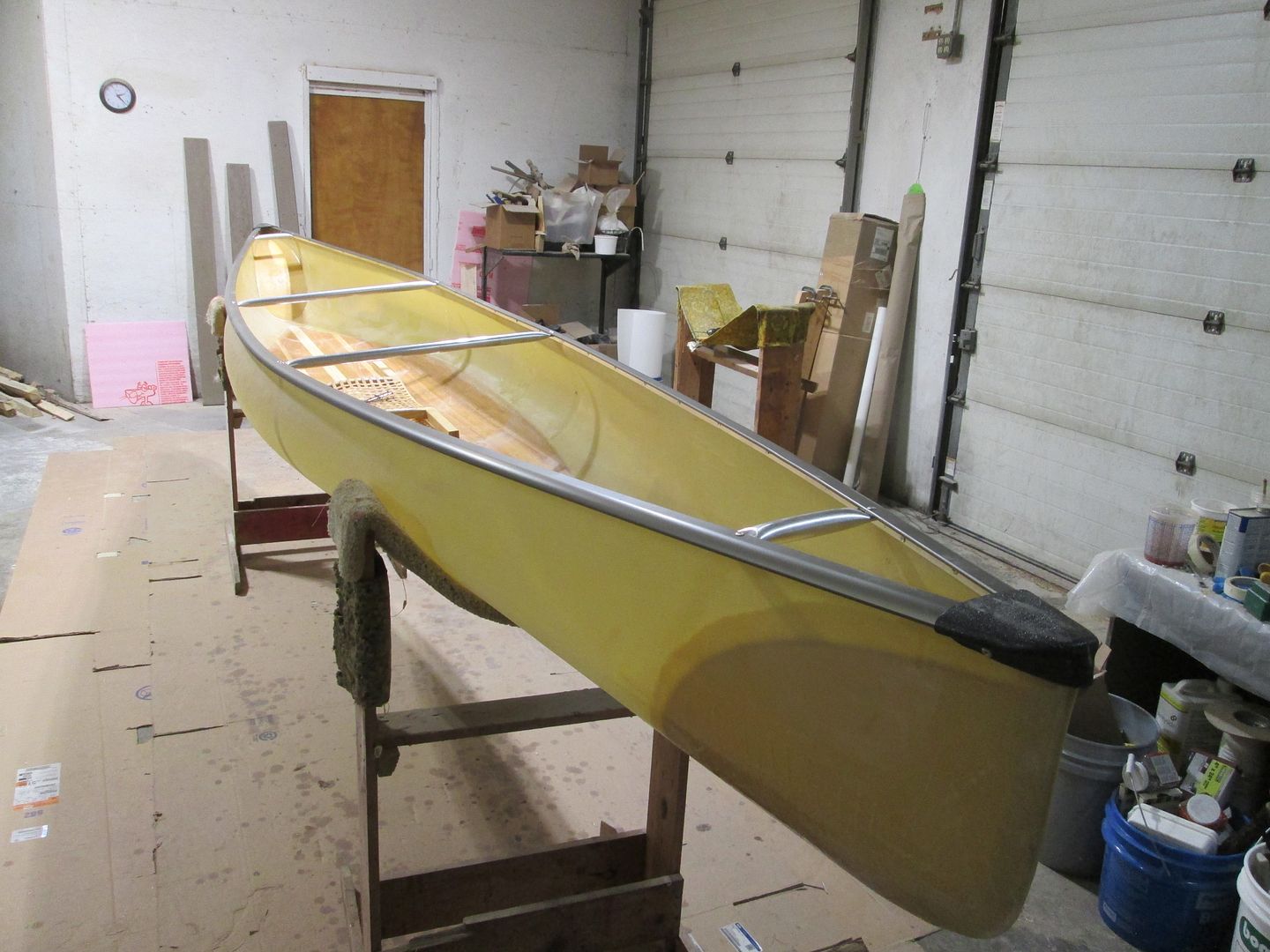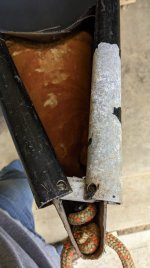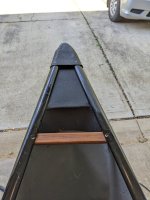Plenty info on wood gunwales, hoping to get closer to details of alu gunwales construction. About to do retrofit on swede form race hull with black wenonah alu gunwales, 1"OD, 0.038" wall thickness thwarts and alu 3/16" poprivets to replace wood and x85+ SS screws for (~1-3lb) weight savings and overall more stiffness.
- I have noticed many commerical made canoes outfitted with alu gunwales with no deckplate. Simply not neccesary?
- Along every instance has "deck" endcaps, does it has function in overall construction?
- Gunwale end to be capped would be sufficient?
- Several ways to mate thwarts to hull (examples I have examined)
- Thwart ends bent to 90deg and 2x rivets thru gunwale
- Thwart ends bent to 90deg and 2x rivets thru hull ONLY, 2-4" below sheerline
- Thwart ends left flat 1x rivet to Alu L bracket that is 2x riveted thru gunwale
- Thwart ends left flat 1x rivet to Alu L bracket that is 2x riveted thru hull ONLY, 2-4" below sheerline.
- Only saw few instances of #3/4 is effort to bypass concerns of thwarts unfolding and only for "main" thwart right behind paddler station
- Guess would make sense since its area where it gets most abuse weight loading wise during shoulder carried portages?
- Not sure about below the sheerline, more lower/wetted surface hull stifness perhaps?




